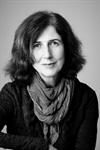Blog
Making Journeys: from the classroom to a third space
Mary Bouquet is an assistant professor, and Fellow for the Art History/ Museum Studies, and Media and Performing Arts tracks, at UCU, where she teaches, o.a., Museum Studies.
My first question, on meeting visual artist and Fine Arts graduate from Damascus University, Fahed, was, “Where have you come from?” I wanted to know where he lived in the Netherlands since, unlike his fellow students who live on campus at UCU, I knew he had to commute.
His answer surprised me: “It was a long, long journey: I started out by going to Egypt, and from there to Turkey, and then on to Greece, Italy …” Eventually it became clear that Fahed had come from Soetermeer that morning.
As a naturalized Dutch citizen, I should have known better: my own reaction to such a question when I arrived here would have been similar, if less dramatic. A percentage of newcomers to any country have had lives and careers before making the journey that defines their status as newcomer. Crossing borders, even under optimal circumstances, prompts questions: “Where are you going? What are your plans?” Answers do not always align with the expectations of those posing the questions.
Before meeting Fahed, I had seen digital images of his graduation project from Damascus University: five figurative oil paintings – Freedom 1, 2, and 3, Untitled, and Schizophrenia. The first three portraits in this series depicted respectively a woman veiled, then assertively shedding her veil, and finally unveiled and posing like a Vogue model; the untitled portrait showed the face, with closed eyes, tightly wrapped in cellophane; the final image split the face between an unveiled left-hand side and veiled right-hand side (with a black eye): Schizophrenia. This brilliantly conceptualized and executed series of images made a deep impact on all who saw it, myself included. The artist’s ability to render a complex geo-political topic in a way that touches the viewer positions this work as truly global contemporary art.
Fahed wrote his introductory assignment for Museum Studies on the Haags Gemeentemuseum Children’s Gallery, also observing a child photographing his mother in front of Mondriaan’s Victory Boogie Woogie. He reflected on the way artistic appreciation is cultivated through such family habits and practices rather than springing from some innate love of art.
Museum Studies involves two site visits and related assignments: Fahed was in his element amid the Teyler Museum’s Painting Galleries, and visiting the Fra Bartolommeu blockbuster at Boijmans. His interest in changing curatorship was evident from the assignment he wrote about successive architectural interventions in the 1935 Boijmans’ building; and in his term essay on the activist curatorship of the 2016 Venice Architecture Biennale by Alejandro Aravena.
Writing essays and participating in group discussions in English must have been challenging enough given that mastery of the Dutch language is the main priority for those seeking asylum in the Netherlands. Furthermore, refugees are required by the municipality where they reside to work. There seemed to be a lack of understanding on the part of municipal authorities as to what studying involves. Despite all this, Fahed completed the course successfully; and I learned a great deal, as I believe Fahed’s fellow students did.
The experience did make me realize, though, that there are issues that are difficult to broach in the classroom context but which deserve attention. Addressing the split reality that refugee students are living, between the municipality of residence and the university classroom, was the driving force behind the USO project, Making Journeys: Building Blocks for Diversity, which will start in September 2017.
Inspired by the eloquence of Fahed’s art works, the aim is to learn from InclUUsion students, their teachers, and fellow students, using arts-based research as the means. We aim to contribute tangibly to UU efforts towards making the university a place where diversity – in its many dimensions – thrives: by designing workshops, a small mobile exhibition, and a ‘third space’ that will be conducive to the kinds of exchanges that are currently absent from the conventional classroom.
9 juni 2017
U moet ingelogd zijn om te reageren, gebruik het formulier aan de linkerkant om in te loggen met uw solis gegevens.



 8
8